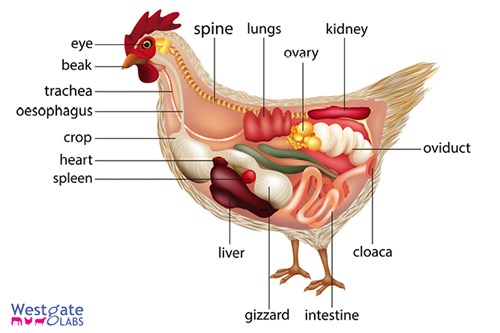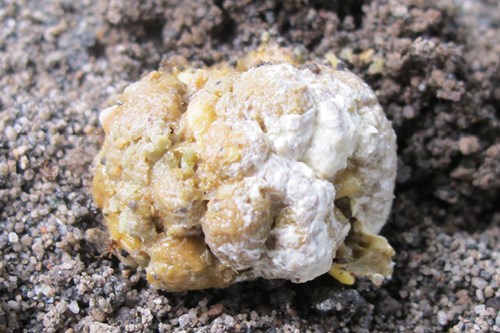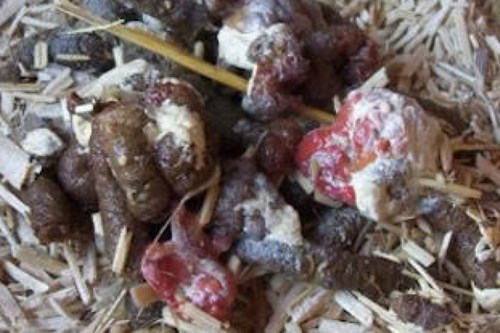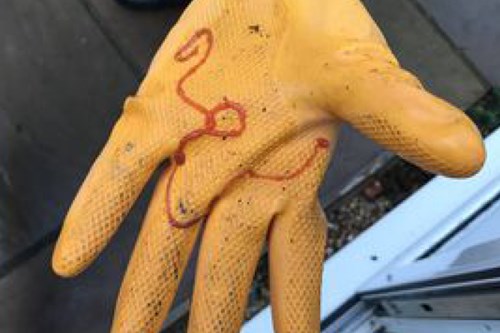The Basic Anatomy Of Chickens and Poultry

Understanding a bit about the internal workings of chicken, and what happens where, helps us to understand how parasite infection affects our birds. The digestive system makes up around 75% of the abdominal cavity. Birds are relatively primitive beings with one vent excreting faecal matter, urine and eggs in female birds. This means the different organs are relatively close together and well connected, aiding migrating parasites.
Chicken Anatomy

-
Food is torn into small pieces by the beak.
-
It passes down the oesophagus to the crop used as temporary storage for up to 12 hrs.
-
Food is released slowly to the proventriculus or stomach to mix with acids and digestive enzymes.
-
This passes through to the gizzard filled with accumulated grit where it is ground down by strong muscular action.
-
And broken down further in the small intestine with enzymes from the pancreas.
-
Bile produced by the liver and stored in the gall bladder helps to break down fat.
-
The intestines digest the food, taking nutrients from it. Water is absorbed in the large intestine.
-
Undigested food is fermented in the ceca. They are emptied every 24 hours or so, and we can see this as a light brown (mustard colour) dropping that is often covered with froth.
-
The cloaca/vent passes a combination of faeces and urine called semi-solid urates, together with eggs from the oviduct.
What to Look for in Poo!

It's essential to know what is normal for your birds! ‘Normal’ droppings consist of faeces and urates. Solid brown /greyish digestive waste capped with white urate. A healthy chicken poops around 12 to 15 times a day.
Hot or stressed chickens produce wetter droppings than usual either from drinking more to keep cool or because stress increases blood pressure.
Caecal droppings are expelled every 8-10 poos. Mustard in colour, generally thicker and stickier they have a particularly foul smell. As unpleasant as it may be, cecal poo is a good indication that the digestive tract is working properly.
Droppings with small amounts of red tissue is perfectly normal -the hen is shedding intestinal lining that constantly regenerates. Large amounts of blood are not normal and should be investigated further.

Chicken poo with some amount of shed intestinal lining is normal.
